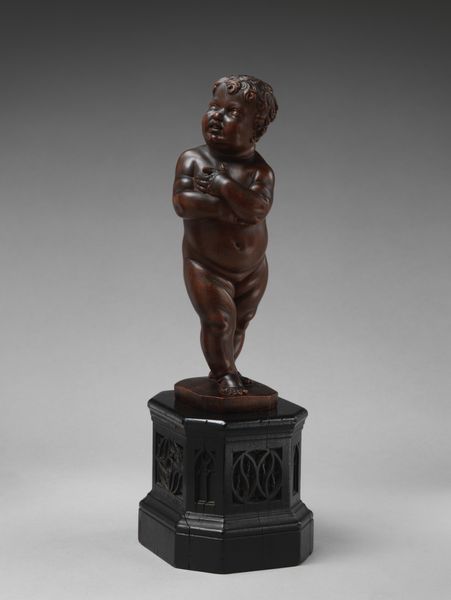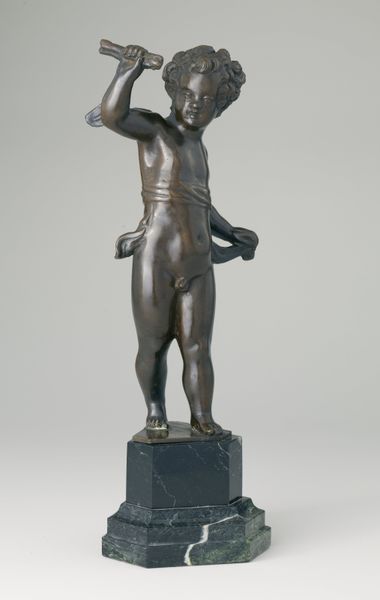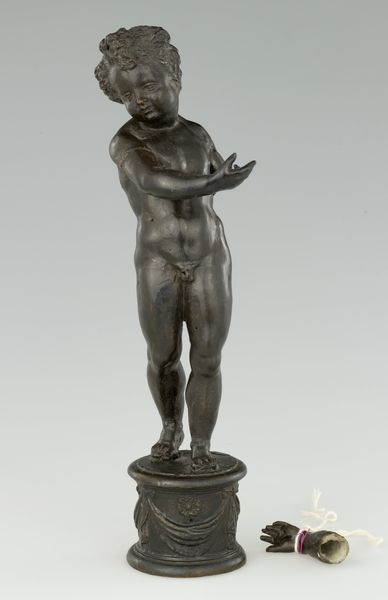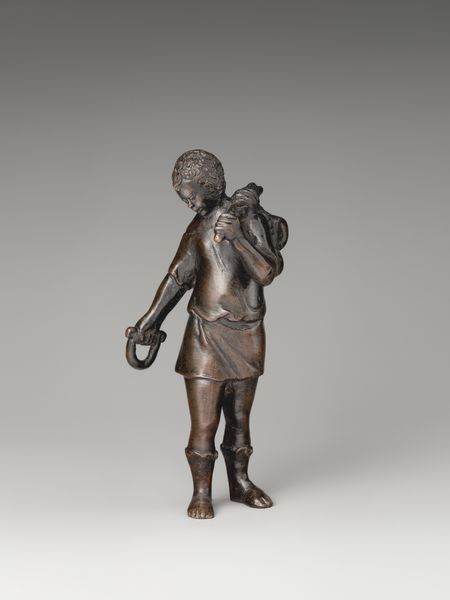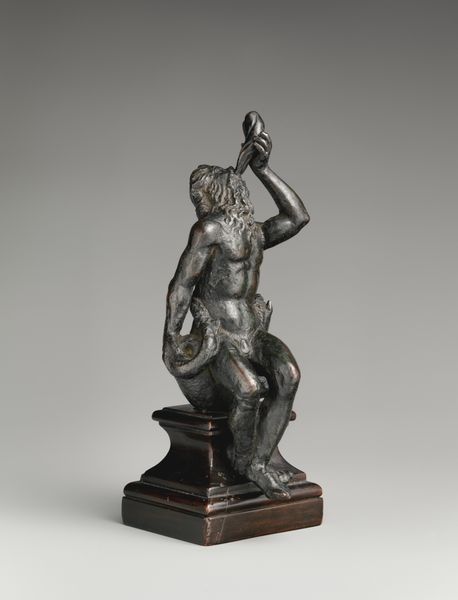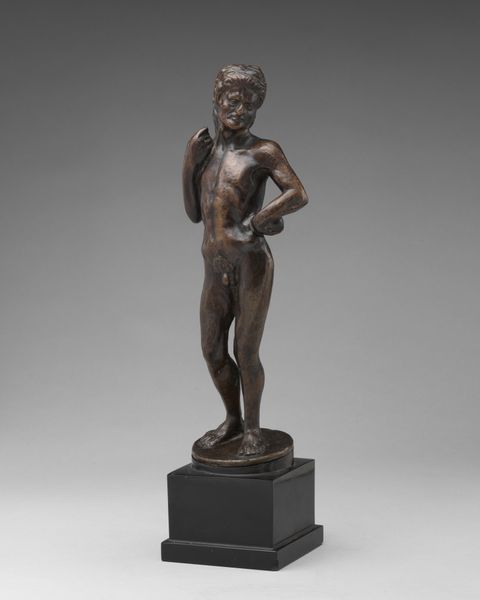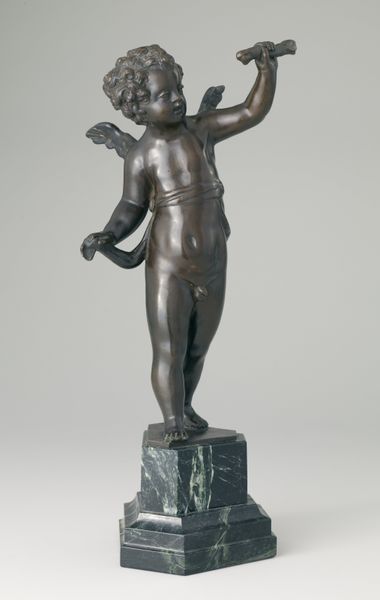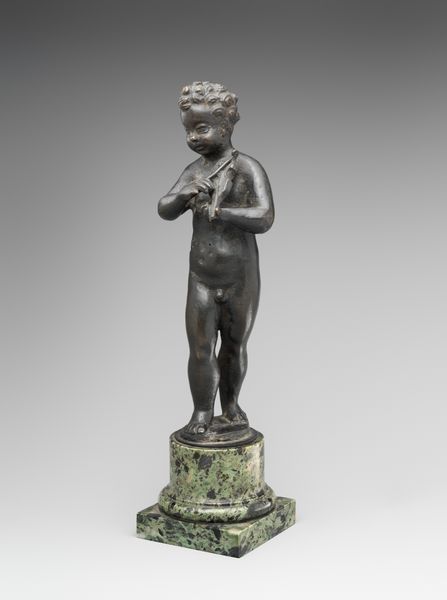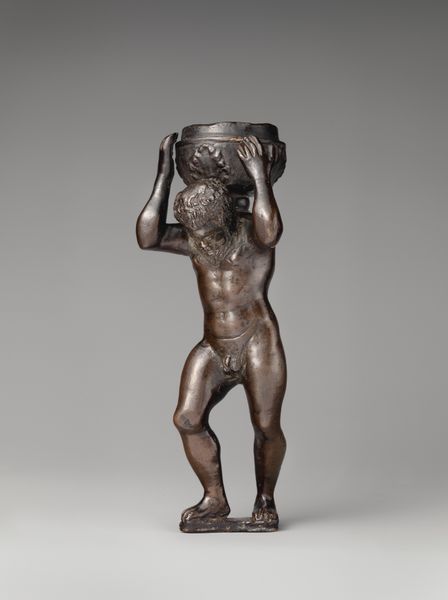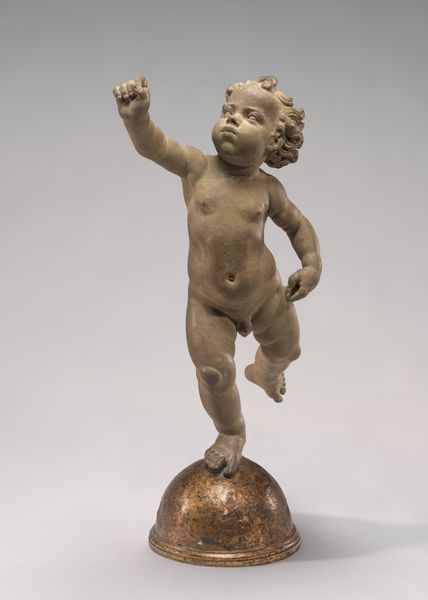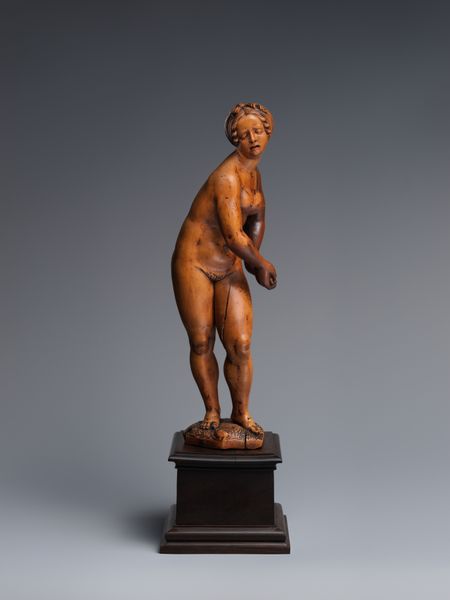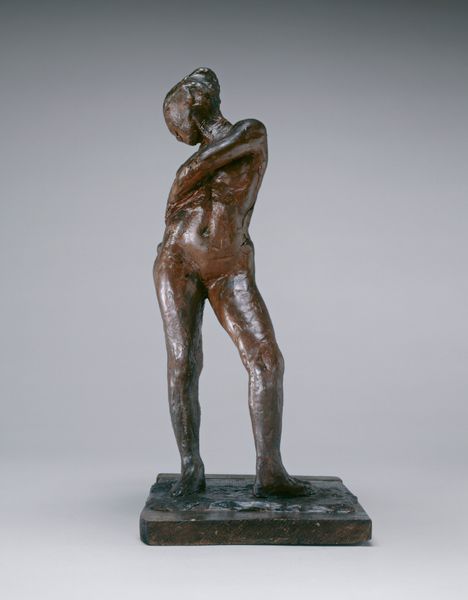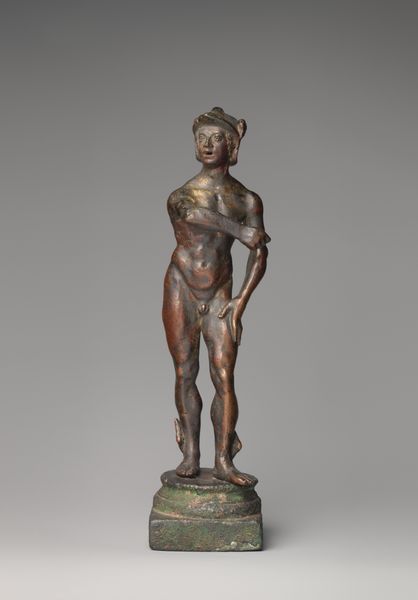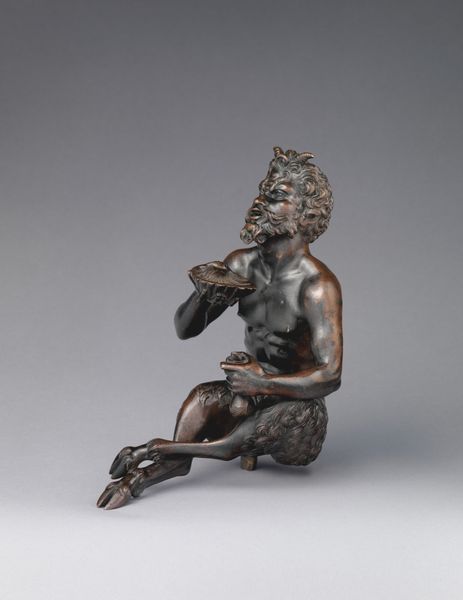
bronze, sculpture
#
3d sculpting
#
baroque
#
bronze
#
figuration
#
sculpture
#
decorative-art
#
male-nude
Dimensions: without base (confirmed): 5 5/16 × 3 1/4 × 2 in. (13.5 × 8.3 × 5.1 cm)
Copyright: Public Domain
Editor: We’re looking at "The Dwarf Morgante as Bacchus," a bronze sculpture from the 17th or 18th century, attributed to Giambologna. The figure is quite... stout. It feels like a playful take on classical ideals. How do you interpret this work, especially considering its material? Curator: This bronze is fascinating from a materialist perspective. Bronze casting, even by the 17th century, required significant resources – the mining, smelting, and skilled labor were costly. The decision to portray Morgante, a figure of mockery in literature, as Bacchus elevates this caricature, but also plays on class distinctions. This sculpture represents an interesting commentary on how power and wealth shape artistic expression. Do you notice any evidence of the casting process itself? Editor: I see a few subtle lines and variations in the surface. Could those indicate seams from the mold? I'm thinking about how those marks might relate to the original craft and labor involved. Curator: Exactly! And that's key. It pushes us to think about this artwork as not just an aesthetic object but the result of very specific labour relations and available technologies. It makes us wonder: Who had access to bronze? Who controlled the means of producing such images? Who would own a piece like this? And further: does this challenge or reinforce the typical status afforded such materials? Editor: So, even in its form and its reference to classical figures, this piece is really rooted in its social and economic moment through its materiality. I initially missed that. Curator: Precisely. The material itself embodies power. Think about the societal value placed upon bronze and other "fine" art mediums versus so-called craft materials. Recognizing how these categories are produced allows us to ask more relevant questions. Editor: Thanks; this has certainly broadened my understanding. I am curious to look closer now at the processes of bronze sculpting and how its place in culture.
Comments
No comments
Be the first to comment and join the conversation on the ultimate creative platform.
